Texas Clearing - Your Stump Removal Services Partner
In the world of land management, stump removal is a critical task. It’s not just about aesthetics; removing stumps can prevent safety hazards and promote healthier ecosystems. At Texas Clearing, we understand the importance of this task and are equipped to handle it with precision and care.
You should read this article because it provides comprehensive insights into the various methods and benefits of stump removal, tailored to different needs and circumstances.

I’ll answer the following questions:
- What is stump removal?
- How does stump removal enhance safety?
- What are the aesthetic benefits of stump removal?
- How does stump removal prevent insect infestations?
- Why is stump removal important for the health of nearby trees?
- How can stump removal protect home foundations and plumbing?
- What are the different types of tree stumps and their removal challenges?
- What tools are essential for efficient stump removal?
What Is Stump Removal?
Stump removal is the process of eliminating the remaining part of a tree after it has been cut down. This involves removing the stump and the root system, ensuring the area is clear for new plant life or construction projects. It’s not just about aesthetics; stump removal is crucial for safety and environmental reasons. As a seasoned tree service, we understand the importance of thorough stump removal, ensuring no part of the tree remains to cause issues later.
Definition of Stump Removal
Stump removal involves extracting the entire stump, including its root system. This process can be challenging, depending on the tree size and root complexity. It’s not just about digging out the stump; it involves careful planning to avoid damage to surrounding areas and ensuring complete removal. Our team uses specialized equipment and techniques, considering factors like stump size, tree type, and location, to efficiently remove stumps with minimal disruption to your property.
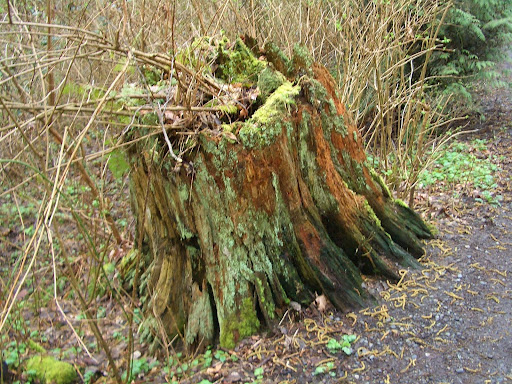
Effective Tree Root Removal Strategies
Removing tree roots is a critical part of stump removal, especially for larger trees with extensive root systems. Our approach involves assessing the root structure and determining the best method for removal, whether it’s manual labor or using heavy equipment. Safety is paramount, so we take precautions to avoid damaging underground utilities or causing accidental damage to your property. Our experienced team ensures that even the deepest roots are removed, leaving a clean and safe area.
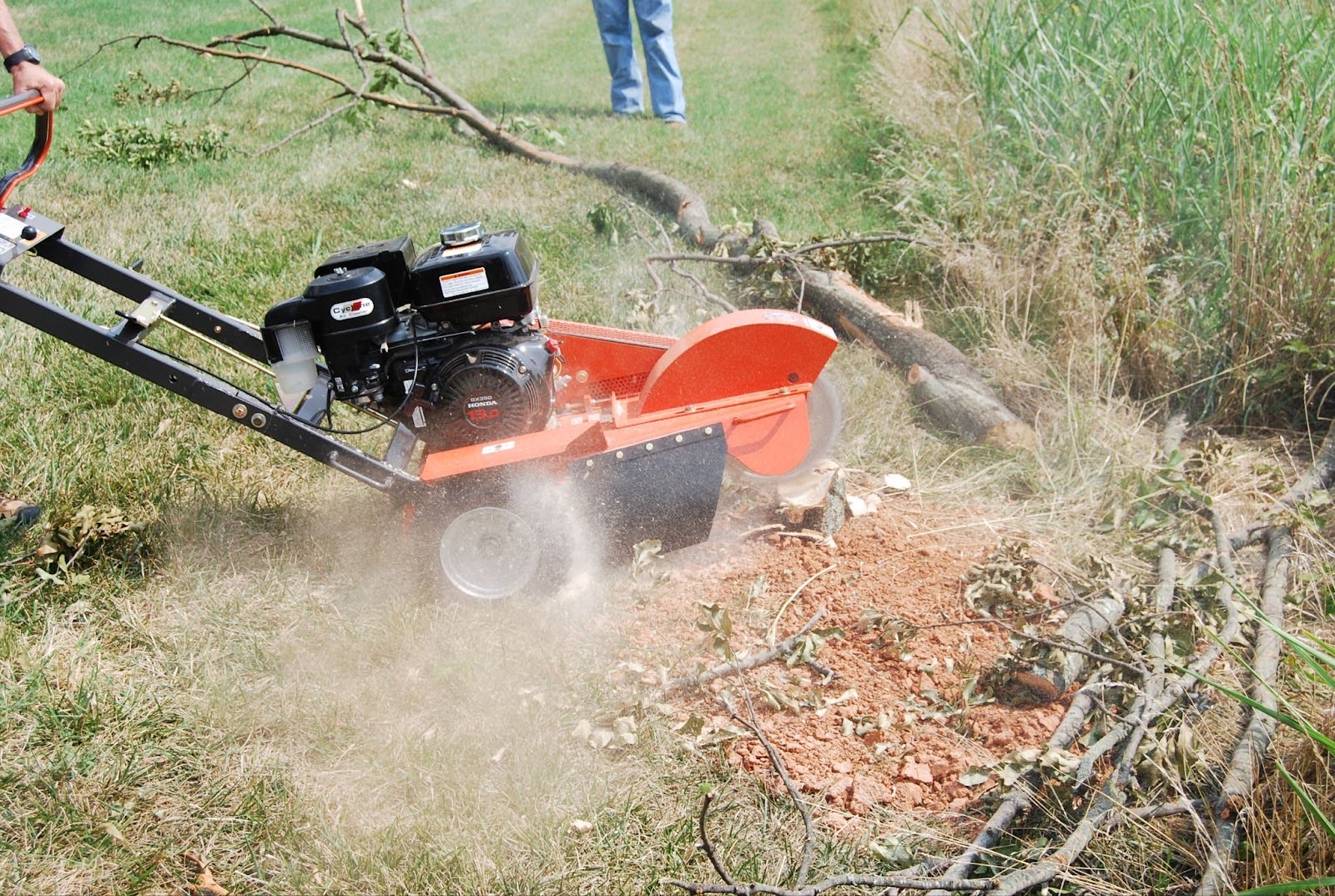
Guide to Tree Stump Removal Methods
Stump removal can be approached in several ways, each with its advantages and considerations. Our team is skilled in various methods, ensuring we can tackle any stump removal project, regardless of complexity.
It’s also vital to consider the condition of the soil post-removal. Soil stabilization is crucial in areas where the stump has affected the soil quality. This process involves treating the soil to remove any contaminants or imbalances caused by the tree’s presence or the stump removal process. It’s a step towards ensuring that the soil is healthy and ready for replanting or any other land use. For expert soil stabilization services that complement your stump removal efforts, explore Texas Clearing’s soil stabilization services for a comprehensive approach to land management.
Stump Grinding Techniques
Stump grinding is a popular method for removing tree stumps. It involves using a stump grinder to chip away at the wood, turning the stump into wood chips that can be used as organic mulch. This method is effective for stumps of all sizes and leaves the ground level and ready for new plant life.
Safe Tree Stump Burning Practices
Burning is another method, though it requires careful safety precautions. It’s suitable for smaller stumps and involves creating a controlled fire to burn the stump away. This method is labor-intensive and requires constant monitoring to ensure safety.
Using Chemicals for Stump Rotting
Chemical stump removers, like potassium nitrate, offer a less labor-intensive method. They accelerate the decay process, making the stump easier to remove. This method takes longer but is effective for stumps that are difficult to access with equipment.
DIY Tree Stump Manual Removal
For smaller stumps, manual removal might be feasible. This involves digging around the stump and cutting through the roots with a saw or axe. It’s labor-intensive but can be a cost-effective solution for smaller projects.
Advanced Tree Root Extraction Methods
For larger stumps with complex root systems, advanced extraction methods using heavy equipment might be necessary. This ensures complete removal of the stump and roots, preventing regrowth and potential hazards.
Key Reasons to Remove Your Tree Stump
There are several compelling reasons to remove tree stumps from your property, ranging from safety to aesthetics.
Enhancing Safety by Removing Tree Stumps
Removing tree stumps is crucial for safety. Left unattended, stumps can be a trip hazard, especially for children and the elderly. They can also damage lawn care equipment. Ensuring safety means removing these hazards, and stump removal companies often emphasize this aspect. Safety precautions, like wearing protective gear including safety glasses, are vital during the stump removal process. Remember, a pesky stump isn’t just an eyesore; it’s a safety risk.
Improving Your Landscape's Aesthetic with Stump Removal
An unsightly tree stump can detract from your property’s beauty. Stump removal enhances the aesthetic appeal of your landscape, making it more inviting and well-maintained. Whether you opt for professional stump removal or tackle it yourself, removing these remnants can transform your yard. Plus, the wood chips produced can be used as organic mulch, contributing to a healthier garden.
Stump Removal to Prevent Insect Infestations
Tree stumps can attract insects like termites and ants. If left to decay, they become a breeding ground for these pests, which can eventually spread to healthy trees or even your home. Professional stump removal, whether through grinding or chemical methods, can prevent such infestations, safeguarding your property’s health and value.
Safeguarding Nearby Trees by Removing Stumps
Stumps can harbor diseases and fungi harmful to other trees. By removing them, you protect the health of the surrounding trees. This is particularly important in maintaining the overall health of your landscape. Tree service professionals can assess and advise on the best stump removal methods to protect your other trees.
Protecting Home Foundations and Plumbing from Tree Roots
Tree roots can grow extensively, potentially damaging home foundations and plumbing systems. Removing stumps and their root systems can prevent this. It’s essential to consider the stump size and root structure; larger stumps with complex root systems may require heavy equipment for removal. This proactive step can save homeowners from costly repairs due to root-related damage.
Eliminating New Sprouts with Tree Stump Removal
Tree stumps can sprout new growth, leading to more unwanted trees. Removing the stump and its root system ensures that the tree doesn’t regrow, keeping your landscape as you desire. Stump removal, whether through manual labor or chemical stump removers, effectively prevents these sprouts, maintaining the integrity of your landscaping design.
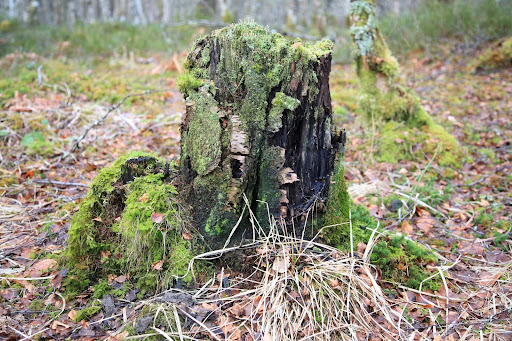
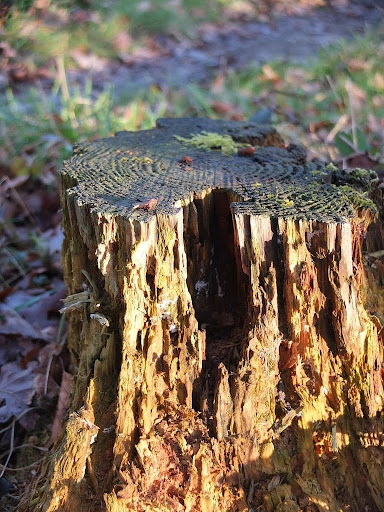
Types of Tree Stumps
Tree stumps vary in size, species, and location, affecting the removal process.
Sometimes stumps are embedded in rocky terrain and rock removal is also necessary. This process involves safely extracting rocks to access the stump, ensuring that the removal is thorough and does not damage the surrounding landscape. For those facing challenges with stumps in rocky areas, consider Texas Clearing’s rock removal services to efficiently handle these complex situations.
Typical Depths of Tree Stumps
Tree stumps can vary in depth, often depending on the tree species and age. Understanding the stump’s depth is crucial for effective removal, especially when using stump grinders or considering chemical removal. Deeper stumps might require more intensive removal methods.
Location and Extent of Tree Roots
The location and extent of tree roots are significant factors in stump removal. Roots can extend far beyond the stump, sometimes several feet wide, and can be as deep as the tree is tall. This can pose challenges, especially if the roots interfere with underground utilities or are near power lines.
Tools for Stump Removal
The right tools are essential for efficient stump removal. Our team uses a variety of tools, including stump grinders, to ensure thorough and safe removal.
Stump Grinder
A stump grinder is a powerful tool used in stump removal. It grinds the stump into wood chips, which can be used as mulch. The grinding process varies depending on the stump size and the grinder’s blade size. For larger stumps, a more powerful grinder is necessary. Safety gear, including steel-toed boots and safety goggles, is essential when operating a stump grinder.
Stump grinding is often just the first step in a larger process of land improvement. Whether it’s for aesthetic improvement or preparing for construction, comprehensive land management often requires a multifaceted approach. Discover how Texas Clearing’s stump grinding services can be part of a broader strategy to manage and improve your land effectively.
Ensuring Safety During Stump Removal
During stump removal, we ensure that all safety precautions are in place. This includes checking for underground utilities, wearing proper safety gear, and using equipment correctly. Our team is experienced in navigating these challenges, ensuring a safe and efficient removal process.
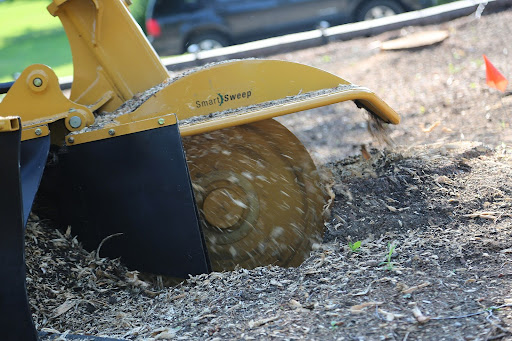
How Stump Removal Fits Into Your Land Improvement Plan
Stump removal is a critical aspect of land improvement. It not only enhances the aesthetic appeal of your property but also ensures safety and the health of your landscape. Whether you’re planning a construction project or simply want to maintain a neat yard, incorporating stump removal into your plan is a wise decision. Remember, the method of stump removal—be it grinding, chemical, or manual—will depend on your specific needs and the nature of the stump.
Get Your Free Quote
Partnering with Texas Clearing for stump removal means you’re working with a team that understands the nuances of this task. We handle everything from small, annoying stumps to large, complex removals. Our approach is tailored to your specific needs, ensuring that we address each stump with the most effective method. Contact us today to discuss your stump removal needs and how we can help enhance your property.
FAQ
Tree stump removal costs in Austin vary, typically hinging on the stump size and the complexity of the root structure. For a standard-sized stump, you might expect an average price ranging from a $150 to $200 minimum cost. The cost of stump removal for larger stumps or those with extensive root systems can be much greater. Factors like the tree type, its diameter inch, and the presence of underground utilities near the stump can also influence the cost. Professional stump removal services often have a minimum charge, reflecting the use of heavy equipment and the labor hours involved.
The most budget-friendly method for tree stump removal is the chemical method, using products like potassium nitrate. This involves drilling deep holes into the stump and applying the chemical to accelerate decomposition. It’s a slower process, taking several weeks to months, but requires less physical labor and no special equipment. Another inexpensive option is the salt method, where rock salt is used to dry out and decay the stump. Both methods are cost-effective but require patience and safety precautions, like wearing protective gear.
Removing tree stumps for free usually means getting your hands dirty with manual labor. You can dig around the stump, exposing the root structure, and use tools like a saw or an axe to cut through the roots. This method is labor-intensive and time-consuming, especially for stumps with deep roots or those inches deep in the ground. Another free method is to use natural products like Epsom salt or rock salt, though this takes time for the stump to fully decompose.
For a balance between cost and effectiveness, consider the burning method. This involves creating a fire on top of the stump, allowing it to burn down to the root level. It’s quicker than chemical removal but requires caution to manage safety hazards, like nearby flammable materials or power lines. Always check local regulations before burning. Another cheap and effective method is to rent a stump grinder, which can be more affordable than hiring professional stump removal services.
The best method often depends on your specific needs and circumstances. For quick and thorough removal, professional stump grinding services are effective, especially for larger stumps or complex root systems. This method involves using heavy equipment to grind the stump into wood chips, which can then be used as organic mulch. It’s one of the quickest methods but typically the most expensive option. For those preferring a DIY approach, chemical stump removers work well but require time and safety precautions.
Stump remover, often containing potassium nitrate, is used to accelerate the decomposition of tree stumps. By drilling holes into the stump and filling them with the stump remover, the chemical breaks down the wood, making it porous and easier to remove. This method is ideal for those who prefer a less labor-intensive approach than manual removal but don’t want the expense of professional services. It’s important to follow safety guidelines, like wearing safety glasses and gloves, when handling chemical stump removers.
